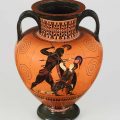Sep 29, 2017
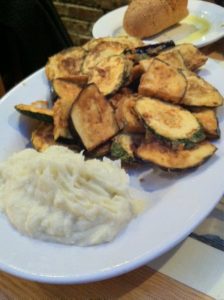 Skordalia (Sκορδαλιά) A Hearty Meal For Couples…why for couples? Because with so much garlic, you really don’t want your beloved to go sleep in the next room! Unless of course you DO want them to go and sleep in the next room, that could be a way to make that happen!
Skordalia (Sκορδαλιά) A Hearty Meal For Couples…why for couples? Because with so much garlic, you really don’t want your beloved to go sleep in the next room! Unless of course you DO want them to go and sleep in the next room, that could be a way to make that happen!
Skordalia or skordhalia/skorthalia (σκορδαλιά [skorðaˈʎa], in Greek also called αλιάδα ‘aliada/aliatha), is a thick puree (or sauce, dip, spread, etc.) in Greek, made by combining crushed garlic with a bulky base
and you can add potatoes and eggplant. It’s DELICIOUS especially if you love garlic! The whole house smells for DAYS.
First time I cooked this, Eva thought I had burnt garlic as a way to ward off demons. I thought that’s what sage was used for but then garlic was used to ward off Dracula so you never know it might work!
If you don’t like your vegetables and want some meat or fish, you can replace the vegetables with fish or some lamb.
How do you make it and what are the ingredients?
Vegetables (to fry)
3 Zucchini’s sliced length ways
1 Medium Eggplant sliced length ways
2 Medium Potatoes – peeled and sliced
Little bit of Thyme
Little bit of Vinegar
Skordalia
3 Medium potatoes
3 Cloves garlic (or more if you REALLY like garlic or you’re trying to ward off Dracula)
1 Tablespoon Vinegar
1 Tablespoon Olive Oil
Fry The Vegetables
- Wash and lightly salt the zucchini, Eggplant and potato.
- Heat the frying pan and olive oil then fry the vegetables until light brown on both sides
- Place on a plate, sprinkle fresh thyme leaves and a little bit of vinegar.
Making the Skordalia
- Boil and mash the potatoes with the garlic cloves
- Stir through the vinegar and olive oil
- Pour over the top of the fried vegetables.
Serve with some hot freshly baked bread!
The post Cooking: Eggplant, Zucchini & Potato Skordalia (Sκορδαλιά) A Hearty Greek Meal appeared first on Zoe Lambros Journal.
Sep 21, 2017
 Mabel is a wonderful name, isn’t it? Its very Australian, and since Evy and I are refugees in this country, I thought of naming my first motorcycle Mabel. The story of how I came up with it is interesting. I wanted something that represented my new country that was young and brash. Evy suggested Princess Diana because she is obsessed with Wonder Woman comics, but I wasn’t going for it. My motorbike was going to be Mabel.
Mabel is a wonderful name, isn’t it? Its very Australian, and since Evy and I are refugees in this country, I thought of naming my first motorcycle Mabel. The story of how I came up with it is interesting. I wanted something that represented my new country that was young and brash. Evy suggested Princess Diana because she is obsessed with Wonder Woman comics, but I wasn’t going for it. My motorbike was going to be Mabel.
I got the idea for the name from our neighbor in the apartment downstairs. Her name was Mabel Andrews and she was an incredible woman. Mrs. Andrews used to walk slowly down the hallway, and I could hear her from our home. She would limp and you could hear her cane as it echoed up the stairs. She used to be a nurse and served with the Army nurses of World War I. Mrs. Jenkins, our landlady, said that Mrs. Andrews was in the thick of it on the Western front nursing the Australian soldiers, and one place that she mentioned was Fromelles. It had to be significant, because Mrs. Jenkins’ voice broke and I thought she would start crying.
I asked Mrs. Jenkins about Fromelles and I was the one to end up in tears because the tale Mrs. Jenkins told me was similar to my own. Mrs. Andrews had two brothers who went to war and both died on the battlefield of Fromelles (my three brothers died on the Albanian border fighting the Italians in 1941).
It was the greatest loss of lives in a battle on a single day in Australian history. It was estimated that there were 5,500 Australian causalities on the first day. The Germans outgunned the Australians.
Speaking of the Germans…What I didn’t know at the time was that a 27-year-old Corporal named Adolf Hitler was among the German soldiers in Fromelles fighting the Australians. Imagine if Corporal Hitler had been killed at Fromelles instead of Mrs. Andrews’ brothers. Imagine the lives that would have been saved. Yes. Just imagine.
Mrs. Andrews never spoke about the war. She was a feisty woman with a great sense of humor, but her smile hid memories she longed to forget. She was wounded when her hospital was bombed. That’s why she limped everywhere. You must be tough to survive a bombing and the death of your brothers. I wonder if she saw them after their bodies were brought in. Maybe God or whoever is up there spared her from that. Mrs. Mabel Andrews died in 1948. She’s at peace now.
I named my motorcycle to honor her. Maybe that’s not the perfect way, but when I think of the name Mabel, I think of her heroism and sacrifice.
Learn more about the Battle of Fromelles
The post A Woman Named Mabel… appeared first on Zoe Lambros Journal.
Sep 19, 2017
Farsala is on the outskirts of Larissa – a farming community where I grew up and nearby is Athena’s Bluff. I have spent a lot of time up there.


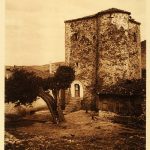

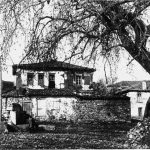

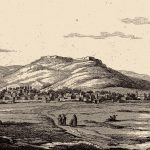
The post My Home in Farsala (Pharsalos) Greece appeared first on Zoe Lambros Journal.
Sep 17, 2017
Evy and I spent the war trying to save Greek Jews by forging papers (that is when we weren’t trying to be mean to each other or when I wasn’t throwing rocks at her or wanting to kill her.) so they could escape. Sometimes that worked and other times, those poor people were caught and murdered. 72,000 Jews lived in Greece before the war. After the war? Only 4,500 to 6000 Jews remain in Greece today.
Here is an interesting video on the show Tracing Your Family Roots. They interview Dr Michael Matsas, author of “The Illusion of Safety, the Story of Greek Jews during the Second World War” talked about his book. He starts off by talking about the Romaniote Jews (Greek: Ῥωμανιῶτες, Rhōmaniṓtes; Hebrew: רומניוטים, Romanyotim)
During World War II, when Greece was occupied by Nazi Germany, 86% of the Greek Jews, especially those in the areas occupied by Nazi Germany and Bulgaria, were massacred despite efforts by the Greek Orthodox Church and many Christian Greeks to shelter Jews. Although the Nazis deported numerous Greek Jews, many were hidden by their Greek neighbors. Roughly 49,000 Jews – Romaniotes and Sephardim – were deported from Thessaloniki alone and murdered.
Of its pre-occupation population of 72,000, only 12,000 survived, either by joining the resistance or being hidden. Most of those who died were deported to Auschwitz, while those in Thrace, under Bulgarian occupation, were sent to Treblinka. The Italians did not deport Jews living in territory they controlled, but when the Germans took over, Jews living there were also deported (Larissa was under Italian rule until the Germans came and then the Germans began their murderous rampage of Greek Jews in Larissa)
Who were these Romaniote Jews?
The Romaniote Jewish community with distinctive cultural features who have lived in Greece and neighboring Eastern Mediterranean countries for more than 2,000 years, being the oldest Jewish community in the Eurasian continent. Their distinct language was Judaeo-Greek, a Greek dialect, and is today modern Greek or the languages of their new home countries. They derived their name from the old name for the people of the Byzantine Empire, Romaioi. Large communities were located in Thebes, Ioannina, Chalcis, Corfu, Arta, Preveza, Volos, Patras, Corinth, and on the islands of Zakynthos, Lesbos, Chios, Samos, Rhodes, and Cyprus, among others. The Romaniotes are historically distinct and still remain distinct from the Sephardim, who settled in Ottoman Greece after the 1492 expulsion of the Jews from Spain.
What happened to them:
A majority of the Jewish population of Greece was killed in the Holocaust after Axis powers occupied Greece during World War II. They deported most of the Jews to Nazi concentration camps. After the war, a majority of the survivors emigrated to Israel, the United States, and Western Europe. Today there are still functioning Romaniote Synagogues in Chalkis which represents the oldest Jewish congregation on European ground, in Ioannina, Athens, New York and Israel.
Additional information from: Wikipedia

The post Tracing Your Family Roots: The Story of Greek Jews in WW2 appeared first on Zoe Lambros Journal.
Sep 16, 2017
 YEAY! Let’s celebrate by eating cake! The new site has been finished and I can’t wait to show you all around. We have art, we have music (you have to check out the fantastic music video of Addicted To You! You don’t win any prizes in guessing what that’s about)
YEAY! Let’s celebrate by eating cake! The new site has been finished and I can’t wait to show you all around. We have art, we have music (you have to check out the fantastic music video of Addicted To You! You don’t win any prizes in guessing what that’s about)
I’m going to start posting my journal entries soon. Very exciting! Have a look around, watch some videos, look at the pretty art and stay for the fun!
Love ya!
Zoe
Here’s the video again just because I love it so much. Feast your eyes on those blue eyes!
The post Redesigned Site! appeared first on Zoe Lambros Journal.
Sep 16, 2017
Spanakopita is one of my favourite Greek dishes. It evokes some of the best memories from my childhood. My mum is a superb cook (my cooking gene somehow got lost in transit and I didn’t inherit her amazing skill). Here is a great recipe for making Spanakopita.
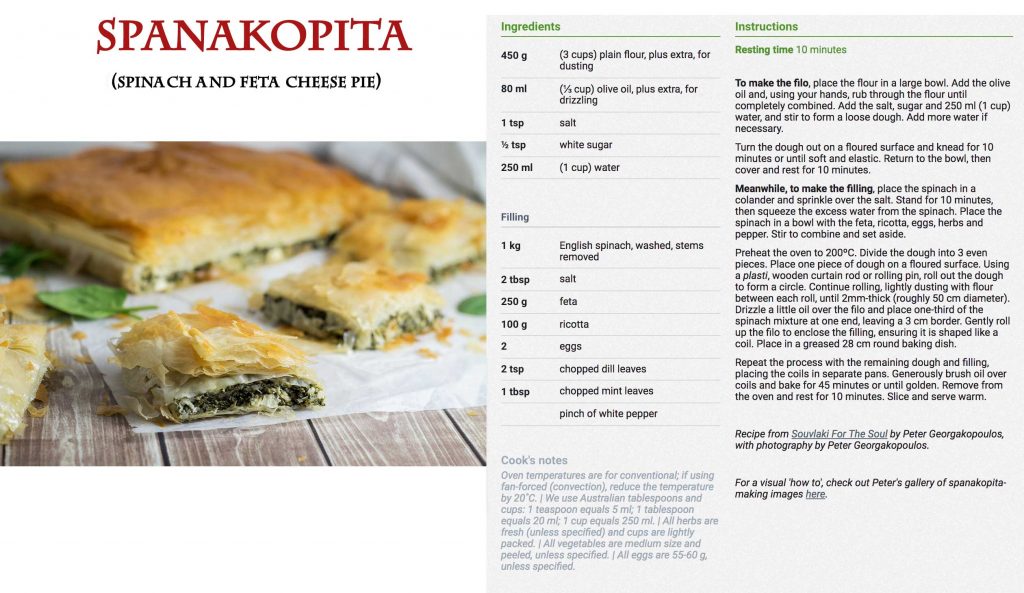
SERVES: 8-10 PREPARATION: 45 MIN COOKING: 45 MIN SKILL LEVEL: MID
Ingredients
- 450 g (3 cups) plain flour, plus extra, for dusting
- 80 ml (⅓ cup) olive oil, plus extra, for drizzling
- 1 tsp salt
- ½ tsp white sugar
- 250 ml(1 cup) water
Filling
- 1 kg English spinach, washed, stems removed
- 2 tbsp salt
- 250 g feta
- 100 g ricotta
- 2eggs
- 2 tsp chopped dill leaves
- 1 tbsp chopped mint leaves
- pinch of white pepper
Instructions
To make the filo, place the flour in a large bowl. Add the olive oil and, using your hands, rub through the flour until completely combined. Add the salt, sugar and 250 ml (1 cup) water, and stir to form a loose dough. Add more water if necessary.
Turn the dough out on a floured surface and knead for 10 minutes or until soft and elastic. Return to the bowl, then cover and rest for 10 minutes.
Meanwhile, to make the filling, place the spinach in a colander and sprinkle over the salt. Stand for 10 minutes, then squeeze the excess water from the spinach. Place the spinach in a bowl with the feta, ricotta, eggs, herbs and pepper. Stir to combine and set aside.
Preheat the oven to 200ºC. Divide the dough into 3 even pieces. Place one piece of dough on a floured surface. Using a plasti, wooden curtain rod or rolling pin, roll out the dough to form a circle. Continue rolling, lightly dusting with flour between each roll, until 2mm-thick (roughly 50 cm diameter). Drizzle a little oil over the filo and place one-third of the spinach mixture at one end, leaving a 3 cm border. Gently roll up the filo to enclose the filling, ensuring it is shaped like a coil. Place in a greased 28 cm round baking dish.
Repeat the process with the remaining dough and filling, placing the coils in separate pans. Generously brush oil over coils and bake for 45 minutes or until golden. Remove from the oven and rest for 10 minutes. Slice and serve warm.
Recipe from Souvlaki For The Soul by Peter Georgakopoulos, with photography by Peter Georgakopoulos.
The post Greek Recipe: Spanakopita (Spinach and Fetta Cheese Pie) appeared first on Zoe Lambros Journal.
 Skordalia (Sκορδαλιά) A Hearty Meal For Couples…why for couples? Because with so much garlic, you really don’t want your beloved to go sleep in the next room! Unless of course you DO want them to go and sleep in the next room, that could be a way to make that happen!
Skordalia (Sκορδαλιά) A Hearty Meal For Couples…why for couples? Because with so much garlic, you really don’t want your beloved to go sleep in the next room! Unless of course you DO want them to go and sleep in the next room, that could be a way to make that happen! Mabel is a wonderful name, isn’t it? Its very Australian, and since Evy and I are refugees in this country, I thought of naming my first motorcycle Mabel. The story of how I came up with it is interesting. I wanted something that represented my new country that was young and brash. Evy suggested Princess Diana because she is obsessed with Wonder Woman comics, but I wasn’t going for it. My motorbike was going to be Mabel.
Mabel is a wonderful name, isn’t it? Its very Australian, and since Evy and I are refugees in this country, I thought of naming my first motorcycle Mabel. The story of how I came up with it is interesting. I wanted something that represented my new country that was young and brash. Evy suggested Princess Diana because she is obsessed with Wonder Woman comics, but I wasn’t going for it. My motorbike was going to be Mabel.







 YEAY! Let’s celebrate by eating cake! The new site has been finished and I can’t wait to show you all around. We have art, we have music (you have to check out the fantastic music video of Addicted To You! You don’t win any prizes in guessing what that’s about)
YEAY! Let’s celebrate by eating cake! The new site has been finished and I can’t wait to show you all around. We have art, we have music (you have to check out the fantastic music video of Addicted To You! You don’t win any prizes in guessing what that’s about)
















